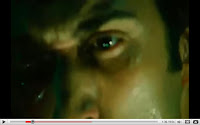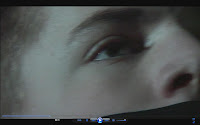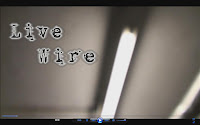- The prelim brief - very specific, focus on certain continuity techniques, film a particular scene, had to include dialogue and exchange between two characters, simple, time limit of three hours.
- The main brief - room for creativity and originality, focus on all aspects of film, film an opening sequence of a film, had to include opening sequence conventions and chosen genre conventions, had whole course to film until deadline day (about two months), had to be two minutes.
What our group learnt from the way we took on the prelim brief:
- We knew we had to keep things very simple as even simple things take a long time in the film world (the whole process).
- We had to work quickly as we had a lot more to organise (actors, location, film plot).
- We did not book our location properly in the prelim and had trouble with people walking in and out of the room we were using to shoot, so we knew we had to nail down the location first and base everything else around it.
- We had to simply adapt around what we had and make use of all available resources.
- We had to communicate well as people got stressed out with each other in the limited time the prelim task gave us, because they were not communicating.
- We had a genre and audience to think about the whole time, so things were going to be different.
What we learnt from the prelim planning process:
- We were taught to write a basic script, draw a storyboard, write a shot list and then draw a shot script from the shot list, which gave us an order to shoot shots in. This helped immensely on shoot as it sped up the process and was a huge part of good organisation. We would not have thought of using a detailed storyboard and shot script on our main task if it were not for the prelim task.
- We were able to split roles between us (one on drawing, one on writing, one on script etc) during the prelim so we applied this to our main task (one on location/props/actors, one on narrative/plot/characters and one on organisation/bookings/to-do-lists/blogging). There were more roles to fill but we got through these quickly by good role organisation.
- We used a location 'reccie' (short for reconnoitre) in our prelim to get a feel for our location and test out suitable angles before the test shoot. Therefore planning for the test shoot was easier. We also used this method in our main task and it gave us knowledge of our location such as the fact we had to move so many boxes to clear the space we wanted to use.
However, there was alot more to organise for our main task (props, actors, lighting etc) and therefore there was alot more to research other than just continuity in our prelim task. It provided us with a greater challenge, but the prelim task had provided us with the basics to give us a head start and organised state of mind.
Things we learnt from the prelim production process:
- We knew beforehand how to use the equipment (apart from lights) such as the Canon cameras and on-board mics. We were given inductions before our prelim task and after the prelim we were thoroughly confident in what we were using.
- We were aware of all the things that could go wrong with a shoot, which happened in the prelim task. This involved continuity issues, time-wasting, shots not looking right that we thought might work, and not getting enough shots. We learnt to always take more than one take of each shot, to try and get as many angles of each shot (whether they look bad or not) and to improvise on the spot to add different perspective to shots that did not look right. We were also made aware of how time could fly by, as we nearly ran out of time in the prelim task and ended up rushing shots, hence not getting enough to edit with.
- We were made aware of continuity issues having learnt the continuity techniques of shot/reverse shot, master shots, 180-degree rule and match on actions. Our prelim task brought out basic mistakes in match on action when we took a shot of a computer screen, but from the shot before the website had changed on screen. We were taught how to check every little thing was in place, especially when re-shooting in the main task, so that there were no continuity errors. This was all to achieve a seemless narrative.
- We learnt how to swap roles between us all on shoot (director, assistant director and sound director) during the prelim task and we applied this to the main task (swapping between director, assistant director, sound and lighting).
- It took us a long time to set up for our prelim shoot (about 15 minutes at the beginning of the shooting hour was spent setting up the tripod). Therefore for the main task we opted to book one long 4 hour shoot instead of lots of short shoots, to minimise time wasted setting up, and to not break our focus once were in 'shot mode'.
- We were encouraged on our main shoot to tell actors to leave more pauses between sentences as on our prelim task the conversation was too quick ending in editing problems - dialogue cut together too quickly resulted in quick-fire shot/reverse shots that looked silly and over-dramatic.
- We learnt not to rush things as many shots for our prelim task were messy with cutting points. We had to precise and for our main task we were backed up with a re-shoot.
There were some differences. For our main task we had to think about our actors, treat them well and look after them. We also had a test shoot before our main shoot to get ourselves together as we had far more to think about. We did not focus on getting everything done in our actual shoot but set ourselves little targets to achieve at a steady pace.
Things we learnt from the prelim editing process:
- We learnt how to use simple editing techniques on Adobe Premiere Pro such as the razor tool, cutting and re-ordering clips to achieve good continuity. This gave us the basics to fall upon in our main task and we could progress in more complex techniques from that starting point.
- Due to limited time in our prelim task we captured one big clip of our whole shoot and cut and dragged shots straight onto the timeline from there. It got quite confusing and time was wasted searching through the whole shoot trying to find where we shot a particular shot. For our main task we split up the clips and organised them into bins, named. Therefore we did not waste time looking for particular clips as we just had to find the labelled clip we wanted from the particular section we wanted (i.e. a bin called 'conversation shots' or 'cutaways').
- In the prelim task we split up the hour we had into 15 minutes each on the mouse editing (there were four of us) but we all still had imput. This taught us the patience to help others edit without taking over the mouse, and we carried this into our main task, all of us getting our fair share of editing time. This caused no arguments or hard feelings.
- The continuity aspect of the task made us hungry for perfection (spending long amounts of time on tiny little things such as sound levels), which we carried forward into the main task. We spent days and days on very small aspects of our film just to achieve perfection.
However, for our main task we had to think of ways to appeal to our audience through subtle enigmas, filmic picture and effects, using new software (After Effects) to aid our titles, and adding music and sound effects from the internet to add to atmosphere (which the prelim task lacked). We also concentrated more on the image, changing contrast, saturation and brightness to give a cinematic look. There was more than one focus whereas our prelim task was simply about the editing. Once again the prelim task gave us the basic foundation of editing but the main task challenged us to expand our editing skills from this point.
Things we learnt from the prelim evaluation process:
- The prelim evaluation has given me something to look back upon during this evaluation, causing me to remember to think about the problems we faced and how we resolved them, other than just what we did on the task. I remembered to talk about things I would do differently because of my preliminary exercise evaluation (see relevant blog post).
- I learnt the basic analytical mind-set during the prelim reflections task and evaluation.
- I learnt how valuable audience feedback is, as we recieved some from other classmates when showing our sequences in a lesson. The criticisms gave me alot to think and talk about during my evaluation, so for our main task we held a big audience screening (more relevant to our target audience) and summarised our feedback to help us see problems in our sequence - for analytical purposes.
- We learnt to look back at what we had learnt relative to the task, which for the prelim task meant continuity theory, but for the main task meant everything (theory on audience, genre, narrative, moving image etc).
However, I found this evaluation alot harder to string together than the prelim one. For this evaluation we had to think about the whole picture and the films relationship with the audience. There was so much to talk about that we decided to have a group discussion to discuss the most important points we would bring up. We also wrote drafts of our evaluation on which I wrote alot more than I should have, and our teachers marked them and told us what to cut out and what to improve on. Furthermore, there was alot more audience feedback to include (30 questionnaires worth compared to 10 or so classmates for the prelim task).
All in all, I think we did learn from most of our mistakes because of the prelim task where we were taught the whole process, an organisational and focused mindset and a hunger for perfection. There were still some issues we found hard to overcome such as continuity issues, mainly to do with moving all the clutter (including many boxes) for both shoot and re-shoot, and keeping chains in the same place. However, we were definately more organised and prepared for most problems we were faced with. We had realised the importance of the little things such as the shot script and how to solve problems and improvise - something we had to do when faced with new problems during our main shoot. These certain issues the prelim task did not prepare us for such as winter illness, actor reliance and lighting problems. On the other hand, I do not think we could have created such a fantastic sequence (and one that I am very proud of) if it were not for doing the prelim task beforehand as it prepared us for the whole process of constructing a film - a process that is long and hard but worth it for the end product.






















































